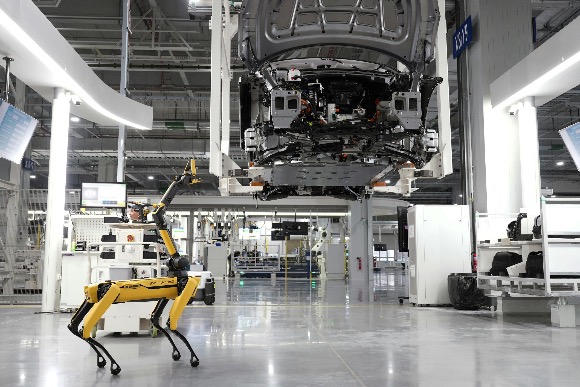Working in Japan: What’s Changing and What It Means for Foreign Job-Seekers
The job market in Japan in 2025 is characterized by historically low unemployment, an expanding labor force despite an aging population, and intensifying labor shortages in key sectors, making industries across the board adapt to demographic pressure and evolving career expectations.
For foreigners seeking career opportunities and internships in Japan, these trends matter. As businesses compete for talent, new doors are opening in fields that are increasingly accessible, even for those with limited Japanese.
At the same time, Japan’s approach to hiring, automation, and work culture is changing, and some industries are adapting faster than others. Understanding what’s happening behind the numbers helps make sense of what opportunities are emerging, where, and for whom.
A Workforce in Transition: Aging, Shortages, and Open Doors
Japan is the second world’s most aged society, with 30% of Japanese aged 65 or older. As birth rates remain low and the population ages, the country is facing a growing gap between the number of people leaving the workforce and the number entering it. Government projections show that by 2040, Japan could be short around 11 million workers.
This isn’t a distant problem: many companies are already feeling the pressure. In a recent Reuters survey, about 66% of Japanese companies interviewed reported that labor shortages were severely affecting their business. To cope, 59% are extending retirement ages and rehiring retired employees, while 69% are looking for new ways to attract and train younger employees.
The shortage of workers is also speeding up conversations about work style changes, automation, and how to make workplaces more appealing. While the challenge is large, it’s also pushing businesses to adapt, creating new opportunities for newcomers.
For those looking at internships or considering future work opportunities in Japan, this labor gap is creating more openings, including for people who may not have years of experience. This has opened up more space for learners, not just experts, and that shift can be encouraging for people still gaining experience but who want to take their first step into the Japanese job market.

Employment in Japan Remains Strong: 2025 by the Numbers
Japan’s job market has remained strong throughout 2025, even as the country continues to navigate long-term issues like its aging population. As of May, around 68.4 million people were employed, a figure that reflects not just recovery from the pandemic years, but also that business activity is holding steady.
One of the biggest changes is the growing number of women in the workforce, which reached a record of 55.1%, helped along by government policies aimed at supporting working parents and closing the gap between men and women in employment.
At the same time, unemployment stayed low at around 2.5%, continuing a trend that’s held for much of the past year. But a closer look at the data shows a market beginning to cool. In May, the job openings-to-applicants ratio (openings per job seeker) stood at 1.24: still showing more jobs than job seekers, but slightly below market expectations of 1.26 and lower than the two previous months. It’s the lowest this ratio has been in three months, which may hint at more cautious hiring on the horizon.
Still, companies across many sectors continue to bring in new talent. Among new graduates in Japan, the employment rate for those finishing higher education in March hit 98% as of April 1, making it the second highest on record. Of that total, the rate was 98.5% for women and 97.6% for men.
Students from humanities fields actually saw slightly higher placement rates (98.2%) than those from science degrees (97.3%), which points to a healthy demand across different industries, not just technical ones.
For job seekers and professionals considering doing an internship in Japan, the current job market presents a window of opportunity, especially for those entering with relevant skills and a willingness to adapt.

How the Market Is Shifting: Labor Mobility, AI Integration, and Evolving Work Culture
Lifetime Employment Is Fading
Japan’s once famously rigid labor market is becoming more mobile and fluid. Traditionally, workers remained with one company for their entire careers (the “lifetime employment” model) and mid-career hiring was relatively scarce. This is changing fast under the pressures of labor shortages and changing employee attitudes.
By late 2023, 79.5% of companies were hiring mid-career employees (workers who had previous job experience), a jump from only 60% of firms a decade earlier. In large companies (1000+ employees), mid-career recruitment has become “standard practice,” with more than 90% of the companies putting it into practice.
Workers are more willing to change jobs for better opportunities, as shown in the Ministry of Health, Labour and Welfare’s Analysis of the Labor Economy where the pursuit of better working conditions and pay was cited as a key driver of increased job transitions in 2023. With many companies raising wages to tackle labor shortages, employees see opportunity to improve their lot by moving.
A survey by Robert Half in 2025 as well found about 32% of workers in Japan were considering changing jobs, highlighting a new mindset that changing companies can be a route to career development. Younger workers especially are less inclined to stay put if unsatisfied, given the abundance of openings elsewhere.
Companies Are Competing for Talent
Companies are adjusting to this new mentality with both carrots and sticks. To retain talent, many firms are boosting pay, improving work-life balance, and creating clearer career paths internally. Yet to acquire talent, they are also refining their recruitment methods, moving away from one-size-fits-all hiring to more role-specific job postings that target needed skills.
The rise of mid-career hiring does not mean the end of Japan’s new graduate tradition (companies still heavily recruit new grads each year, as earlier mentioned). But it means that career mobility has been “normalized” alongside the old system.
This greater mobility is seen as positive for productivity (better matching of skills to jobs) and for individuals (more chances to advance or find flexible arrangements). However, it also introduces challenges: companies face higher turnover risk and must differentiate themselves to attract/keep staff.

Tech Hiring in Japan Is Booming
While major tech layoffs have occurred globally in part due to AI efficiencies, Japan’s tech employment hasn’t seen mass cuts; on the contrary, tech hiring is robust: recent surveys show there are about 7.6 IT job openings per applicant, one of the highest ratios of any field.
Roles in AI, cybersecurity, and cloud computing are especially sought-after. Many companies are digitalizing operations, creating new tech positions in traditional industries as well. The push for DX (digital transformation) strategy is spurring hiring of IT consultants, data analysts, and AI specialists across the economy.
The Japanese approach has been to view automation as a “force multiplier” rather than a pure “job killer”. This mindset partly arises from necessity: with labor so scarce, any task that can be automated helps relieve pressure on existing employees (who are often overworked).
It’s also cultural: Japan has a history of embracing robots (from factory floors to social robots) in a complementary role. In fact, Japan produces about 45% of the world’s industrial robots, and automation is deeply embedded in its manufacturing sector. In industries like automotive and electronics, robots handle repetitive or heavy-labor tasks, allowing human workers to focus on quality control or complex assembly. Some companies, like Nissan, use collaborative robots (“cobots”) to work alongside technicians, reducing errors while freeing staff for more skilled tasks.
AI as a Workforce Partner, Not a Replacement
AI and automation are key to Japan’s strategy for its labor shortages. They are being used to supplement the human workforce, not entirely supplant it. Many tedious tasks are being handed off to AI/robots, while humans are redirected to higher-value or interpersonal work.
This has so far mitigated the potentially negative employment impacts. Japan’s labor market, being so tight, has effectively absorbed technological change without spiking unemployment.
The challenge ahead will be ensuring workers have the skills to thrive in more AI-enhanced roles, which Japan is addressing via education and training initiatives. If the balance is kept, automation will continue to raise productivity and offset population decline, all while humans remain in control of the more complex, creative, and caregiving aspects of work. Japan’s approach sees AI making people more valuable, not less, by pairing human strengths with machine efficiency.

What This Means for Foreign Job-Seekers in Japan
A Growing Presence in the Workforce
Japan’s labor trends have significant implications for foreigners who want to work in Japan. In recent years, Japan has gradually opened its doors wider to foreign talent, both high-skilled professionals and blue-collar workers, as a response to domestic labor shortages and demographic decline.
In 2025, foreign nationals play a larger role in Japan’s workforce than ever before, and government policies have evolved to facilitate their entry and retention with different, and newer, visa options (Specified Skilled Worker, Highly Skilled Professional, J-Skip, J-Find, etc.)
In fact, the population of foreign workers in Japan has hit a new record. As of October 2024, there were approximately 2.30 million foreign employees in Japan, a 12.4% increase from the year prior. This marks the 10th+ straight year of growth in the foreign workforce.
The number of businesses employing at least one foreigner also reached a record 342,000 establishments, showing that even small firms and rural businesses are hiring foreign staff (indeed, about 62% of the workplaces employing foreigners are small businesses with <30 employees). This dispersion shows foreigners aren’t only in big cities; labor-starved local industries are also seeking help from abroad.
Where the Opportunities Are
Given the labor shortage, many sectors are actively hiring foreign talent. For English-speaking and skilled foreigners, IT and technology is a prime area: Japanese tech firms and startups are eager to hire software engineers, AI specialists, and programmers from overseas.
Another growing area is digital marketing and tourism services. With the tourism boom, agencies and hospitality companies seek foreigners who can leverage language skills (Chinese, English, etc.) to cater to tourists. For specified skilled roles, agriculture, construction, food service, manufacturing, and care work are all actively looking for foreign workers.
However, most Japanese workplaces still require some Japanese ability, particularly customer-facing roles. That said, younger Japanese are more accustomed to diversity now, and big cities like Tokyo have growing expat professional communities. And some international companies have even adopted English as an official working language (e.g., Rakuten, Mercari).
In summary, foreign job-seekers find a Japan that is more open than before, with plenty of job openings due to the labor shortage. Those with in-demand skills will discover growing opportunities. The change in society is ongoing, but by 2025 one can say that foreign workers have become an “indispensable part” of Japan’s labor force.

A Job Market Still in Motion

Japan’s job market in 2025 is steady on the surface but changing underneath. Low unemployment and record-high employment levels show continued economic strength, yet labor shortages, demographic shifts, and evolving work expectations are forcing companies to adapt. Mid-career hiring is no longer a rarity, AI is being used to support workers, and new attitudes toward job mobility are reshaping the employer-employee relationship.
For foreign professionals, these shifts open up new possibilities. While integration challenges remain, the need for international talent is increasingly hard to ignore. As of late 2024, a record 3.77 million foreign residents in Japan was reached, and government projections suggest nearly 7 million foreign workers may be needed by 2040 to sustain economic activity. What began as cautious experimentation with immigration has become a broader, if gradual, policy shift.
Overall, Japan’s labor market is becoming more flexible, more digital, and more diverse. The traditional models haven’t disappeared, but they are being adjusted to fit the realities of a shrinking population and a more globalized economy. For anyone considering working or interning in Japan, 2025 offers a clearer path into a country that’s changing carefully, but undeniably.
💼 Ready to take the next step toward your career in Japan?
If you’re exploring job opportunities or looking for an internship in Japan that fits your goals, now is a great time to get started. Japan’s labor market is changing fast, and so are the opportunities! Apply now or contact us so we can help you get there!







